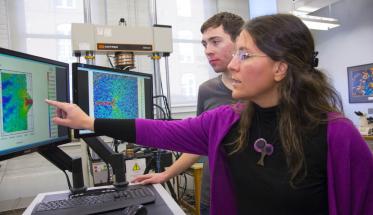The Wall Street Journal/Times Higher Education College Ranking has devised a new ratings system that strives to recognize universities focused on doing an outstanding job of educating students, unlike many other rankings which applaud universities for simply being exclusive. This new ranking is specifically focused on the teaching performance of U.S.-based colleges with over 1000 students.
Within this ranking, WPI has rated first in the nation for the category of "The Top Faculties; Schools that do the Best in Combining Scholarly Research with Classroom Instruction.”
The article "Where Great Research Meets Great Teaching," which appeared in the September 28, 2016 issue of The Wall Street Journal, noted that, “Some schools hire brilliant professors whose research expand the boundaries of their academic discipline. Others attract great teachers who inspire and engage their students. A handful, like Worcester Polytechnic Institute in Massachusetts and Pomona College in California, can boast they offer both.”
The article also noted that "To gauge both the quality and accessibility of professors, The Wall Street Journal/Times Higher Education College Ranking looked at how many research papers per faculty member each school produced and asked student to rate on scale of 0 to 10 how accessible their professors were to them and to what extent the school provided them with opportunities for collaborative learning.”
Senior Vice President Kristin Tichenor was interviewed for this article and The Wall Street Journal reported her saying that “the school had long prided itself on the accessibility of its faculty but had a rude awakening about eight years ago, when a national engagement survey showed that first-year students didn’t share that sentiment… In response, the school created the Great Problems Seminar, a project-based class taught by senior faculty that challenges students to solve some of the world’s most daunting challenges, like energy production or water contamination. Students are organized in teams with members from across disciplines, and their final product is tested in the real world.”



